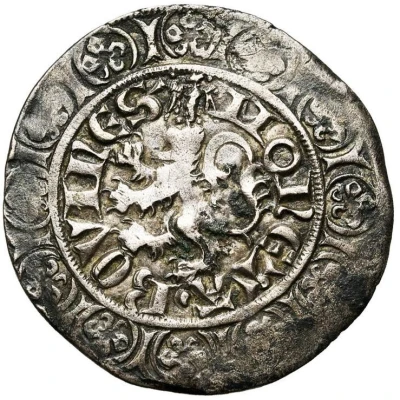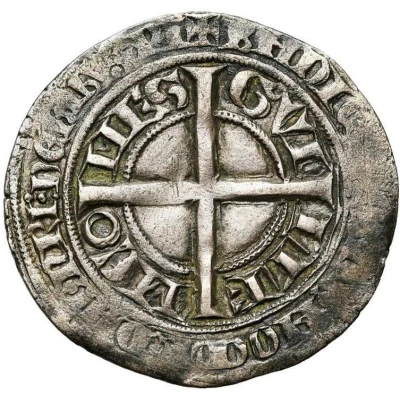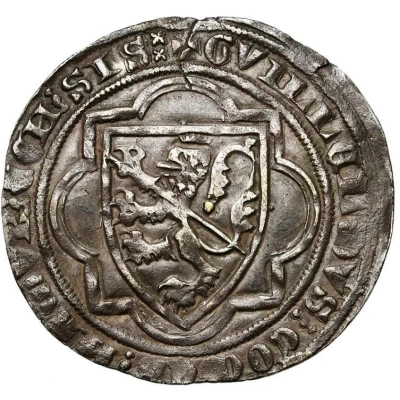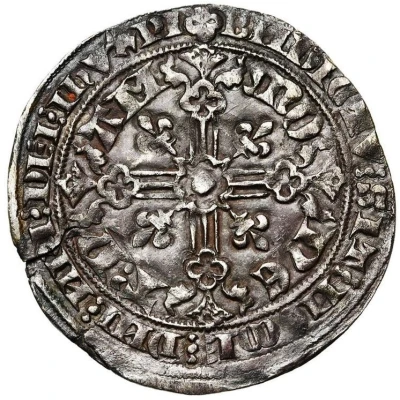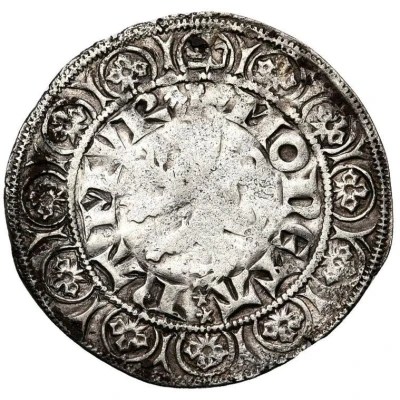
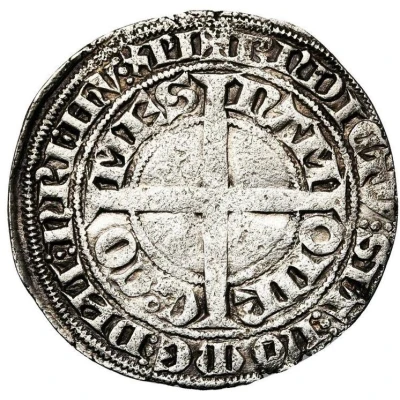

© Jean Elsen & ses Fils s.a.
Groat - William I lion ND
| Silver | 3.4 g | - |
| Issuer | County of Namur (Belgian States) |
|---|---|
| Count | William I (Willem I) (1337-1391) |
| Type | Standard circulation coin |
| Years | 1337-1391 |
| Value | 1 Gros |
| Currency | Groot (-1506) |
| Composition | Silver |
| Weight | 3.4 g |
| Shape | Round (irregular) |
| Technique | Hammered |
| Demonetized | Yes |
| Updated | 2024-10-04 |
| Numista | N#312223 |
|---|---|
| Rarity index | 100% |
Reverse
Cross pattee intersecting interior legend, within dotted circle, surrounded by lettering within an outer dotted circle.
Script: Latin (uncial)
Lettering:
G ◦★ CO MES nAM OIIR
✠ BnDICTV ⋮ SIT⋮ nOmE ⋮ DNI ⋮ nRI ⋮ IhV ⋮ XPI
Lettering (regular font):
G ◦★ CO MES NAM OIIR
✠ BNDICTV ⋮ SIT⋮ NOME ⋮ DNI ⋮ NRI ⋮ IHV ⋮ XPI
Translation:
William, count of Namur.
Blessed be the name of our Lord, Jesus Christ
Comment
Minted around 1340.The gros au lion of William I of Namur imitates the gros "compagnon" of Brabant (see reference below) and leeuwengroot of Flanders which were issued in the late 1330s.
It was minted at Namur and Bouvignes (Chalon Namur 156), with very few known examples of each in private collections.
Interesting fact
One interesting fact about the Standard circulation coin Groat - William I (lion) ND (1337-1391) from County of Namur (Belgian States) made of Silver weighing 3.4 g is that it features a unique design, with an image of a lion on one side and a cross on the other, which was a common motif in medieval coinage. The lion was a symbol of strength and courage, while the cross represented the Christian faith and the power of the church. This coin is a rare and valuable example of medieval currency and is highly sought after by collectors.
